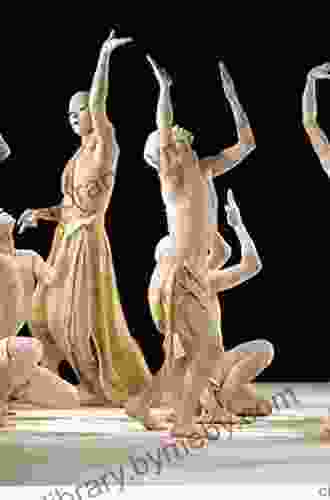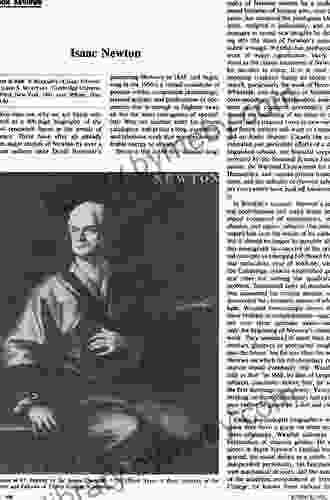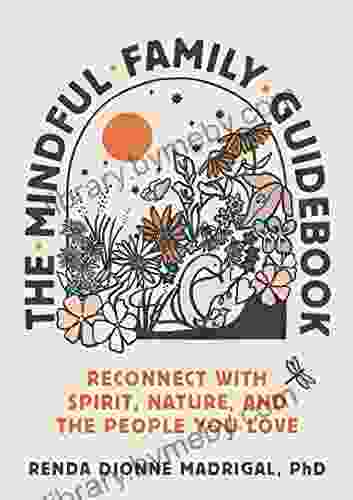Dancing Into Darkness: Butoh, Zen, and Japan

In the enigmatic world of Butoh, dancers surrender themselves to darkness, embracing the grotesque and the sublime to create performances that are both haunting and mesmerizing. Emerging in the aftermath of World War II, Butoh embodies the fractured spirit of a nation grappling with its past and searching for meaning in a shattered world.
4.5 out of 5
| Language | : | English |
| File size | : | 2169 KB |
| Text-to-Speech | : | Enabled |
| Screen Reader | : | Supported |
| Enhanced typesetting | : | Enabled |
| Word Wise | : | Enabled |
| Print length | : | 290 pages |
Drawing inspiration from Zen Buddhism and traditional Japanese aesthetics, Butoh dancers explore the depths of human emotion and experience, delving into realms of darkness, pain, and transformation. Their movements are raw, contorted, and often grotesque, yet imbued with a profound beauty that transcends the physical.
This article invites you on a journey into the enigmatic world of Butoh, unveiling its history, philosophy, and techniques. Through the lens of this unique dance form, we glimpse the complexities of Japanese culture, the resilience of the human spirit, and the transformative power of art.
The Origins of Butoh
Butoh emerged in the 1950s and 1960s as a rebellion against the traditional forms of Japanese dance and theater. Post-war Japan was a time of immense social and political upheaval, and artists sought new ways to express the trauma and disillusionment of the era.
The pioneers of Butoh, such as Tatsumi Hijikata and Kazuo Ohno, rejected the rigid conventions of classical Japanese dance, opting instead for a more experimental and visceral approach to movement. They drew inspiration from the avant-garde dance and theater movements of Europe, as well as from traditional Japanese rituals and folk dances.
Butoh's early performances were often shocking and controversial, desafiing audience expectations of what dance should be. Dancers painted their bodies in white makeup, contorted their bodies into grotesque shapes, and explored themes of death, decay, and the subconscious.
Zen and Butoh
Zen Buddhism has been a profound influence on the development of Butoh. Zen emphasizes the importance of self-discovery and enlightenment through meditation and introspection. Butoh dancers strive to embody the Zen principles of impermanence, acceptance, and the unity of all things.
In Butoh performances, dancers often seek to transcend the boundaries of their own bodies, merging with the surrounding space and the audience. This reflects the Zen belief in the interconnectedness of all beings and the illusory nature of the self.
Butoh dancers also draw inspiration from Zen rituals and practices, such as the tea ceremony and calligraphy. These practices emphasize the importance of attention to detail, stillness, and the beauty of imperfection.
Japanese Aesthetics and Butoh
Butoh is deeply rooted in traditional Japanese aesthetics, which emphasize the beauty of imperfection, the transience of life, and the importance of asymmetry and irregularity.
Butoh dancers often incorporate elements of traditional Japanese theater, such as masks, costumes, and stylized movements. They also draw inspiration from Japanese folk dances, which are characterized by their earthy, ritualistic nature.
In Butoh, the concept of "ma" is of paramount importance. Ma refers to the empty space between objects or events, and it is considered to be an integral part of the performance. Butoh dancers use ma to create a sense of tension, anticipation, and release.
The Philosophy of Butoh
Butoh is more than just a dance form; it is a philosophy of life. Butoh dancers believe in the power of art to transform the body, mind, and spirit. They strive to create performances that are both cathartic and enlightening.
Butoh dancers explore the dark recesses of the human psyche, confronting pain, suffering, and mortality. However, they do so with a sense of compassion and acceptance. Butoh performances are often seen as a way to heal old wounds and to find beauty in the most unexpected places.
Butoh dancers also believe in the importance of spontaneity and improvisation. They often work without scripts or set choreography, allowing the moment to guide their movements. This approach reflects the Zen principle of "mushin" or "no-mind," which emphasizes the importance of being present in the moment and letting go of preconceptions.
The Techniques of Butoh
Butoh dancers employ a unique set of techniques to create their haunting and otherworldly performances. These techniques include:
- Slow, deliberate movements: Butoh dancers move with a slow, deliberate pace, allowing the audience to absorb every detail of their performance.
- Contorted and grotesque shapes: Butoh dancers contort their bodies into extreme and often grotesque shapes, desafiying the conventional notions of beauty and movement.
- White makeup: Butoh dancers often paint their bodies in white makeup, which creates a mask-like effect and emphasizes the otherworldly nature of their performances.
- Minimal costumes: Butoh dancers often wear minimal costumes, exposing their bodies to the elements and allowing the audience to see the raw physicality of their performance.
- Improvisation: Butoh dancers often improvise their performances, allowing the moment to guide their movements and creating a sense of spontaneity and authenticity.
Contemporary Butoh
Butoh continues to evolve and flourish in the contemporary dance world. While the core principles of Butoh remain the same, contemporary Butoh artists
4.5 out of 5
| Language | : | English |
| File size | : | 2169 KB |
| Text-to-Speech | : | Enabled |
| Screen Reader | : | Supported |
| Enhanced typesetting | : | Enabled |
| Word Wise | : | Enabled |
| Print length | : | 290 pages |
Do you want to contribute by writing guest posts on this blog?
Please contact us and send us a resume of previous articles that you have written.
 Book
Book Novel
Novel Page
Page Chapter
Chapter Text
Text Story
Story Genre
Genre Reader
Reader Library
Library Paperback
Paperback E-book
E-book Magazine
Magazine Newspaper
Newspaper Paragraph
Paragraph Sentence
Sentence Bookmark
Bookmark Shelf
Shelf Glossary
Glossary Bibliography
Bibliography Foreword
Foreword Preface
Preface Synopsis
Synopsis Annotation
Annotation Footnote
Footnote Manuscript
Manuscript Scroll
Scroll Codex
Codex Tome
Tome Bestseller
Bestseller Classics
Classics Library card
Library card Narrative
Narrative Biography
Biography Autobiography
Autobiography Memoir
Memoir Reference
Reference Encyclopedia
Encyclopedia Piri Halasz
Piri Halasz Robert M Goldstein
Robert M Goldstein Lynn Sally
Lynn Sally Win Worley
Win Worley Lisa Bevere
Lisa Bevere Marc Cram
Marc Cram W Caleb Mcdaniel
W Caleb Mcdaniel Michael Halperin
Michael Halperin Tom Dokken
Tom Dokken Kirk Deeter
Kirk Deeter Sukanya Rahman
Sukanya Rahman Sean Mcmanus
Sean Mcmanus Shifio Patterns
Shifio Patterns Laird Scranton
Laird Scranton Marlynn Jayme Schotland
Marlynn Jayme Schotland Pamela Maass Garrett
Pamela Maass Garrett Mark Stevens
Mark Stevens Kit Pearson
Kit Pearson Sam Subity
Sam Subity Ronald Destra
Ronald Destra
Light bulbAdvertise smarter! Our strategic ad space ensures maximum exposure. Reserve your spot today!

 Felix HayesAn Unconventional Guide to Becoming a Real Estate Entrepreneur and Building...
Felix HayesAn Unconventional Guide to Becoming a Real Estate Entrepreneur and Building... Ted SimmonsFollow ·4.9k
Ted SimmonsFollow ·4.9k Branden SimmonsFollow ·6.4k
Branden SimmonsFollow ·6.4k Jacques BellFollow ·2.3k
Jacques BellFollow ·2.3k Clarence BrooksFollow ·15k
Clarence BrooksFollow ·15k Ruben CoxFollow ·19.5k
Ruben CoxFollow ·19.5k Tennessee WilliamsFollow ·12.1k
Tennessee WilliamsFollow ·12.1k Douglas AdamsFollow ·12k
Douglas AdamsFollow ·12k Harrison BlairFollow ·5.3k
Harrison BlairFollow ·5.3k

 Clay Powell
Clay PowellDiscover the Enigmatic Beauty and Profound Meaning in...
An Exploration of Emptiness, Fulfillment,...

 Brenton Cox
Brenton CoxThe Life and Times of the Woman Who Changed Abortion: The...
Norma McCorvey, the woman known...

 Darius Cox
Darius CoxBest 60 Short Hairstyles For Women With Thick Hair: A...
Embracing the beauty of...

 John Parker
John ParkerThe Healthy Pregnancy Book: Your Essential Guide to a...
Pregnancy is a...
4.5 out of 5
| Language | : | English |
| File size | : | 2169 KB |
| Text-to-Speech | : | Enabled |
| Screen Reader | : | Supported |
| Enhanced typesetting | : | Enabled |
| Word Wise | : | Enabled |
| Print length | : | 290 pages |














